
Shenzhen Shenwan Street Park / AUBE CONCEPTION. Image © Tianpei Zeng
在建筑项目中应用雨水的小建议
Tips for Using Rainwater in Architectural Projects
由专筑网邢子,小R编译
从理论上讲,自地球形成以来,我们星球上的水总量一直保持不变。你之前喝过的那杯水可能曾经流向恒河、经过恐龙的消化系统,甚至冷却过核反应堆的颗粒。当然,在它成为解渴的水之前,它经历过几百万次的蒸发和降雨。水会被污染或滥用,但不会被凭空创造或丢失。联合国教科文组织的一项研究表明,地球上大约有13.86亿立方公里的水。但是,此含量的97.5%是盐水,只有2.5%是淡水。在这些淡水中,大多数(68.7%)以永久冰雪的形式出现在南极、北极和山区,另有29.9%作为地下水存在。最终,湖泊、水库和集水区仅能提供地球上淡水总量的0.26%,这些水很容易满足世界的经济和一些重要需求。随着人口的稳定持续增长,特别是在城市地区,一些国家在向居民提供必要的饮用水方面已经存在严重问题。
The total amount of water on our planet has, theoretically, stayed the same since earth's formation. It's possible that the glass of water you drank earlier contains particles that once ran down the Ganges River, passed through the digestive system of a dinosaur, or even cooled a nuclear reactor. Of course, before it quenched your thirst, this water evaporated and fell as rain millions of times. Water can be polluted or misused, but never created or destroyed. According to a UNESCO study, it is estimated that the Earth contains about 1386 million cubic kilometers of water. However, 97.5% of this amount is saline water and only 2.5% is fresh water. Of this fresh water, most (68.7%) takes the form of permanent ice and snow in Antarctica, the Arctic, and in mountainous regions. Another 29.9% exists as groundwater. Ultimately, only 0.26% of the total amount of fresh water on Earth is available in lakes, reservoirs, and watersheds, where it is easily accessible for the world's economic and vital needs. With the population steadily increasing, especially in urban areas, several countries have already had severe problems with providing the necessary amount of drinking water to their populations.

Convertible Courtyards House / Megowan Architectural. Image © Nils Koenning
同时,众所周知,大量的饮用水由于泄漏、浪费和滥用而损失。研究表明,在家庭生活中,有40%至50%的水可以被节约下来,这包括用于洗手间、灌溉、清洁乃至洗衣服的水。当然,这并不意味着应该使用脏水或污染水,相反,例如雨水就可以用于这些功能。这是一种对社会环境负责的廉价替代方案,应得到政府的鼓励。像澳大利亚这样的国家在雨水利用方面已经高度发达,但是对于许多其他国家来说,这还不是现实。为了在未来的项目中包含这项技术,建筑师必须考虑一些这方面的相关措施。
At the same time, it is well known that a considerable amount of drinking water is lost through leaks, waste, and misuse. In domestic homes, studies show that between 40% and 50% of water consumption does not need to be suitable for human consumption. This includes the water used for the toilet, irrigation, cleaning, and even the washing of clothes. Of course, this does not mean that dirty or polluted water should be used instead. Rather, rainwater, for example, can be used for such applications. This is a socio-environmentally responsible and inexpensive alternative that should be increasingly encouraged by governments. Countries like Australia are already highly developed in terms of rainwater use, yet for many other countries, this is not yet a reality. To include this technology in future projects, architects must take a few things into account.
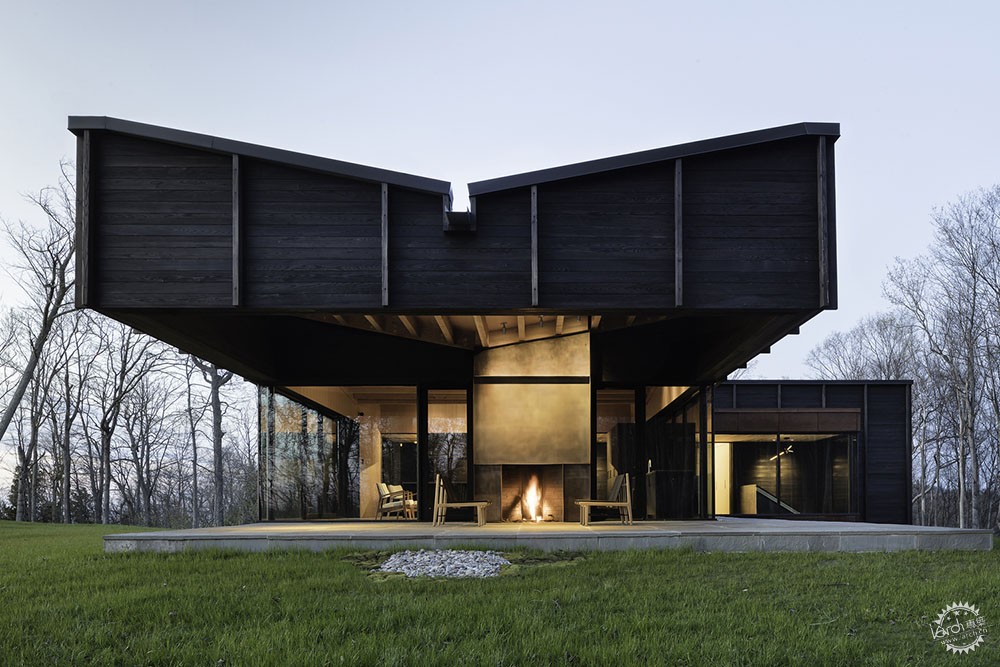
Michigan Lake House / Desai Chia Architecture + Environment Architects. Image © Paul Warchol
除了减少饮用水的消耗外,雨水的收集会在暴雨时给城市排水基础设施减轻负担。该系统非常简单,集水区通常位于建筑物的楼板或屋顶部分,但也可以从其他表面(如道路或广场)取水。从那里开始,水被引导通过排水沟和管道,直接到达集水库。集水库是整个系统中最昂贵的部分,其合适的尺寸至关重要,而后人们既可以使用雨水,又不浪费资源和空间。
In addition to reducing the consumption of drinking water, the capture of rainwater does not overburden urban drainage infrastructure in the event of heavy rains. The system is quite simple. The catchment area is generally the building's slab or roof, but water can also be drawn from other surfaces, such as a road or a square. From there, the water is directed through gutters and pipes until it reaches the reservoir. The reservoir is the most expensive component of the entire system, and its correct dimensioning is vital so that the rainwater can be used satisfactorily without wasting resources and space.

Confluence Park / Lake|Flato Architects + Matsys Design. Image © Casey Dunn
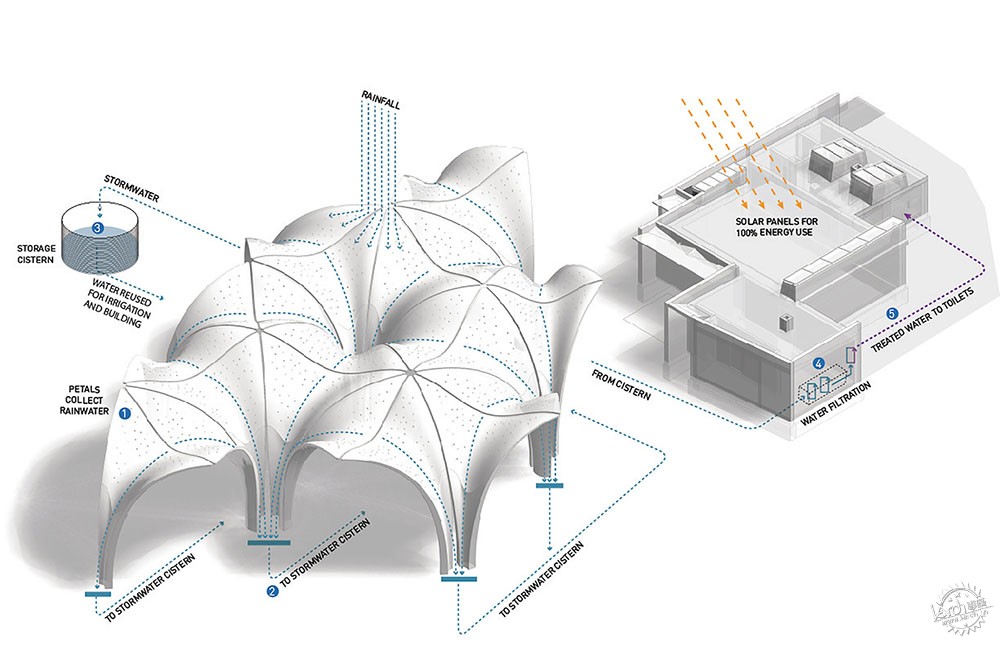
Vista Axonométrica. Image Cortesia de Lake|Flato Architects + Matsys Design
影响水箱容积的因素包括集水区的面积、对物业的用水需求,但最重要的是,该区域的平均降水量,这可以通过历史数据确定。还有几个用于雨水的水库容积的计算方式,可以帮助选择水箱容积。咨询专家或供应商以根据实际情况做出最合适的选择也是很有效的方式,例如,全年降雨频繁且分布均匀的地区的蓄水池可能较小。而在雨季和旱季的地区,必须使用较大的集水库来满足干旱月份的需求。
The factors that influence the volume of the tanks include the dimensions of the catchment area, the demand for water on the property, and, most importantly, the average precipitation of the region, which can be determined through historical databases. There are also several reservoir volume calculators for rainwater that can help in choosing the tank volume. But it is always most effective to consult a specialist or a supplier to make the most appropriate choice for your situation. For example, a location with frequent and well-distributed rainfall throughout the year may have smaller cisterns. An area with a rainy season and a dry season must use a larger reservoir to supply the dry months.
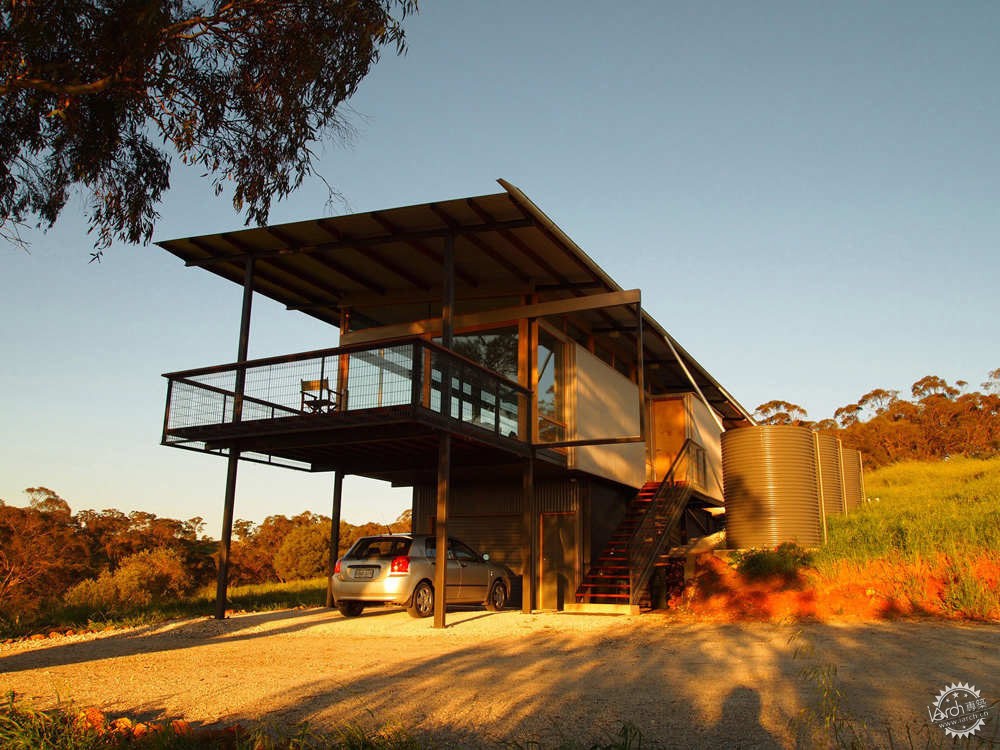
Angaston Pavilion / Jon Lowe. Image © Jon Lowe
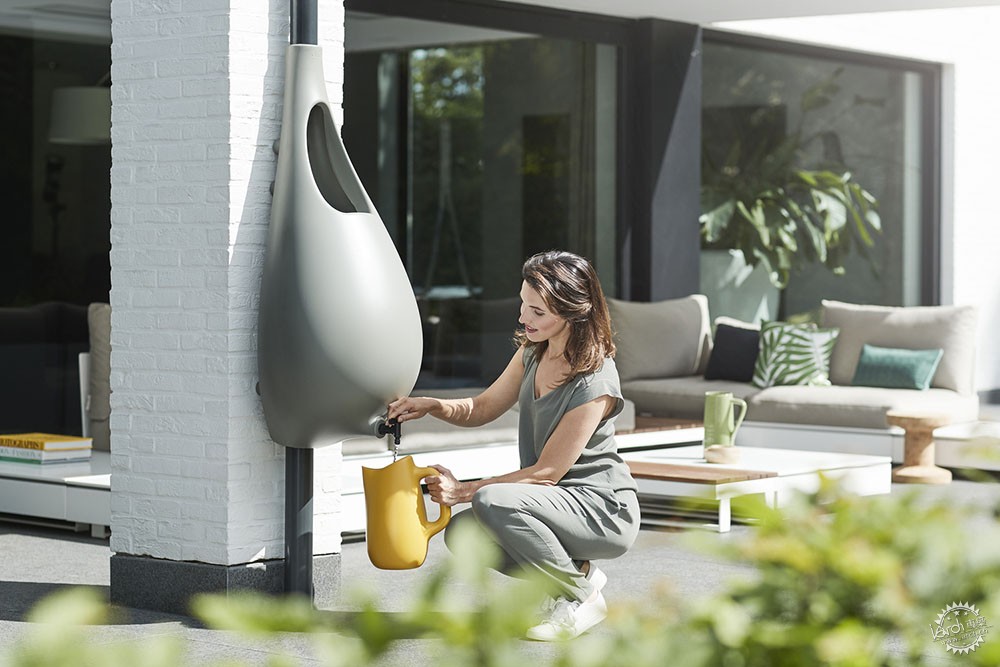
Raindrop. Image Cortesia de Studio Bas van der Veer
另一个重要的建议是始终丢弃第一升的雨水,此步骤很重要,因为这些水会冲洗集水表面(例如屋顶或楼板),并且还会从城市大气中吸收最大数量的有毒污染物。有几种为此目的而设计的产品和过滤箱,它们会自动引导处理第一升雨水。同样,建筑师应考虑在落水管中使用筛子,以使叶子和其他沉淀物远离集水库。为了正常工作,定期清洁排水沟并保持其良好状态、维护水箱内部是至关重要的。
Another important recommendation is to always discard the first liters of rainwater. This step is important because these are the waters that wash the catchment surface, such as the roof or the slab, and also concentrate the largest number of toxic pollutants from the atmosphere in cities. There exist several products and filtration tanks designed for this purpose, which automatically direct the first liters of rain for disposal. Similarly, architects should consider using sieves in the descent tubes so that leaves and other materials cannot reach the tanks. For proper functioning, cleaning the gutters periodically and keeping them in good condition is vital, as is maintaining the interior of the cisterns.

Saxum Vineyard Equipment Barn / Clayton & Little. Image © Casey Dunn
收集的水通常用于非饮用功能,例如灌溉、清洁,甚至可用于抽水马桶。对于这些用途,通常不需要进行大量的净化,只需进行一些过滤即可除去主要杂质。但是雨水也可以用于人类的生活消耗、洗澡和烹饪食物,在这种情况下,建筑师应考虑使用更复杂的处理方法,例如紫外线消毒或反渗透,同时必须寻求有合格资质的技术支持。
The collected water is generally used in non-potable applications, such as irrigation, cleaning, and even for flushing toilets. For these uses, there is generally no need for great purification care, just some filtration to remove the main impurities. But rainwater can also be used for human consumption, bathing, and cooking food. In these cases, architects should use more complex treatments, such as ultraviolet disinfection or reverse osmosis. It is essential to seek qualified technical assistance if this is the intention.
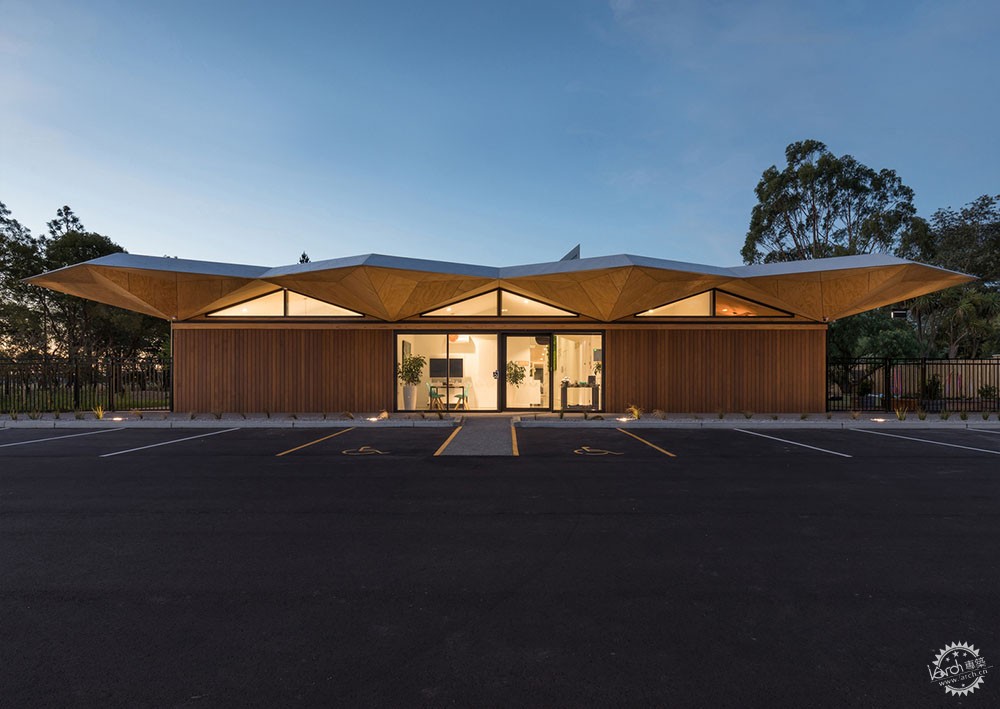
Three Trees Learning Centre / Collingridge and Smith Architects. Image © Mark Scowen
雨水系统投资回收迅速,维护和运营成本低,但是,建筑师必须从项目开始就考虑其应用,以确保该系统的大小适合结构的特定需求。雨水的使用是一种非常古老的方法,研究表明,早在新石器时代,就有蓄水池用于雨水收集的证据。例如,在庞贝,在公元前一世纪修建渡槽之前,屋顶上的雨水存储很普遍。越来越多的建筑应向过去学习,以解决当代问题。就像许多项目更乐于利用自然光、阳光和风一样,将雨水用于家庭使用是简单的常识性手段,也是保存这种宝贵以及必不可少的生命资源的绝佳方法。
Rainwater systems have a quick return investment, with low maintenance and operation costs. But architects must consider its application from the beginning of the project to ensure that the system is well sized for the structure's specific demands. The use of rainwater is an extremely old method - research shows evidence of cisterns for this use from as early as the Neolithic Period. In Pompeii, for example, rainwater storage on the roof was common before the construction of the aqueduct in the first century BC. More and more, architecture must learn from the past to face contemporary issues. In the same way that many projects increasingly aim to take advantage of natural light, sunshine, and wind, using rainwater for domestic use is a question simply of common sense and an excellent way to conserve this precious and essential resource for life.
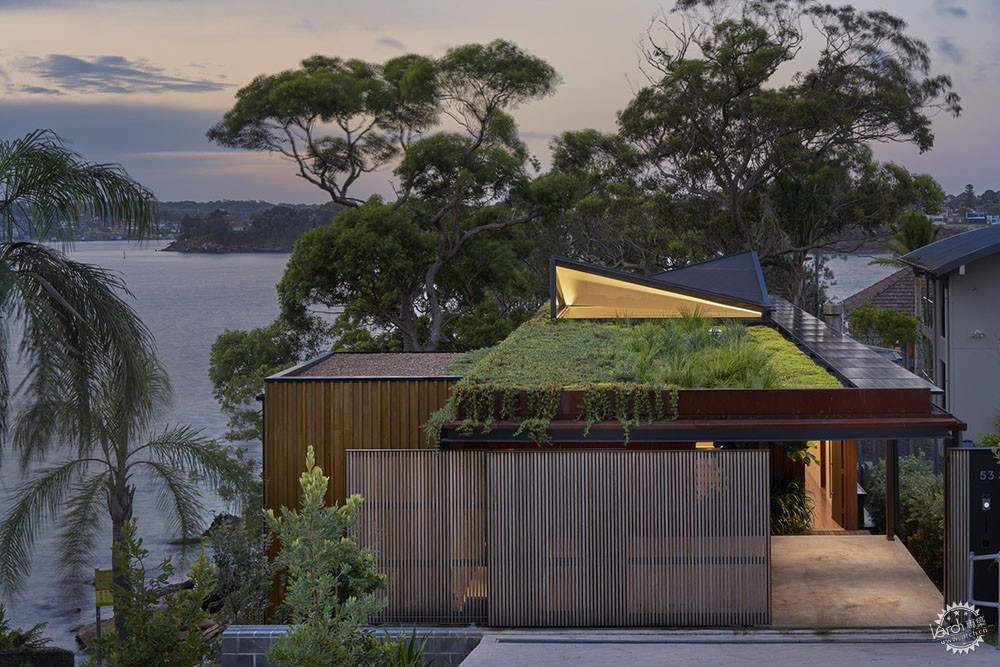
Bundeena Beach House / Grove Architects. Image © Michael Nicholson Photography
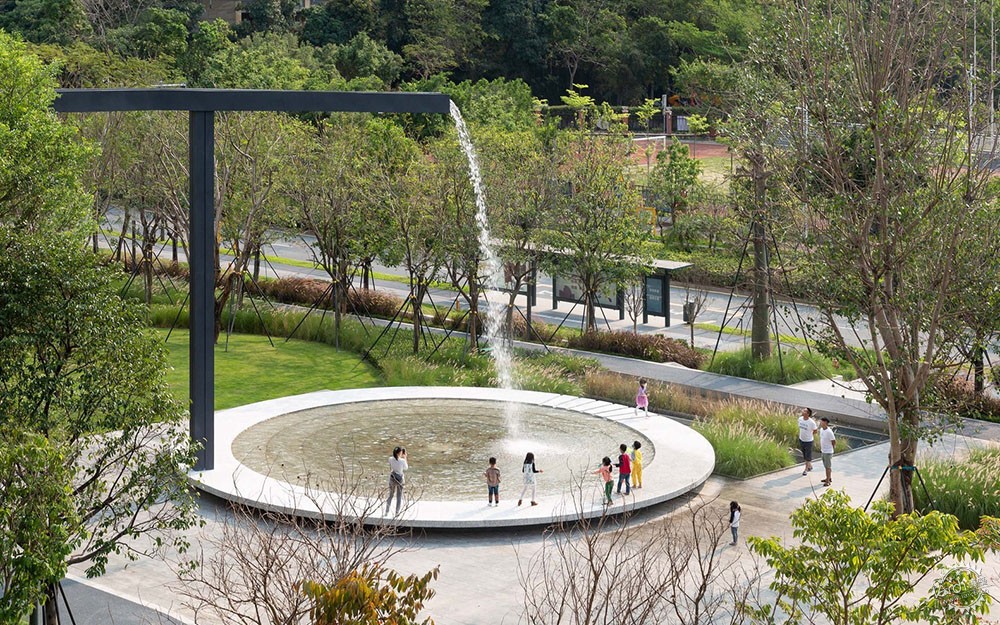
Shenzhen Shenwan Street Park / AUBE CONCEPTION. Image © Tianpei Zeng
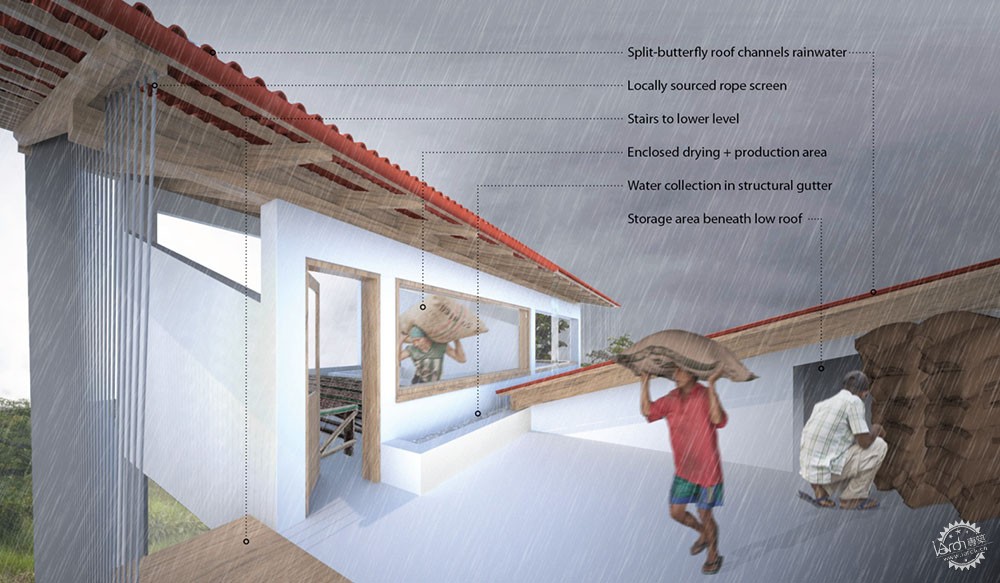
Cortesia de Yantaló Perú Foundation
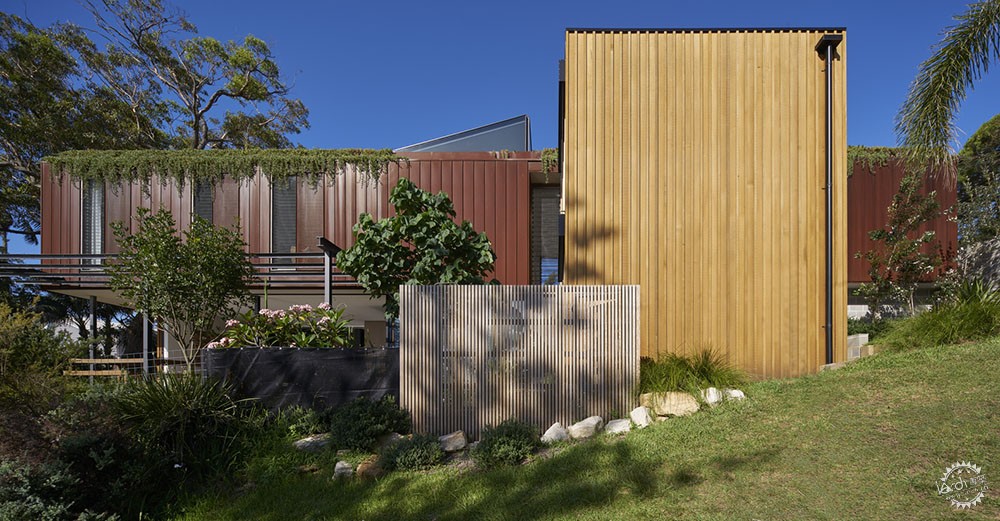
Bundeena Beach House / Grove Architects. Image © Michael Nicholson Photography

Cortesia de Yantaló Perú Foundation
|
|
